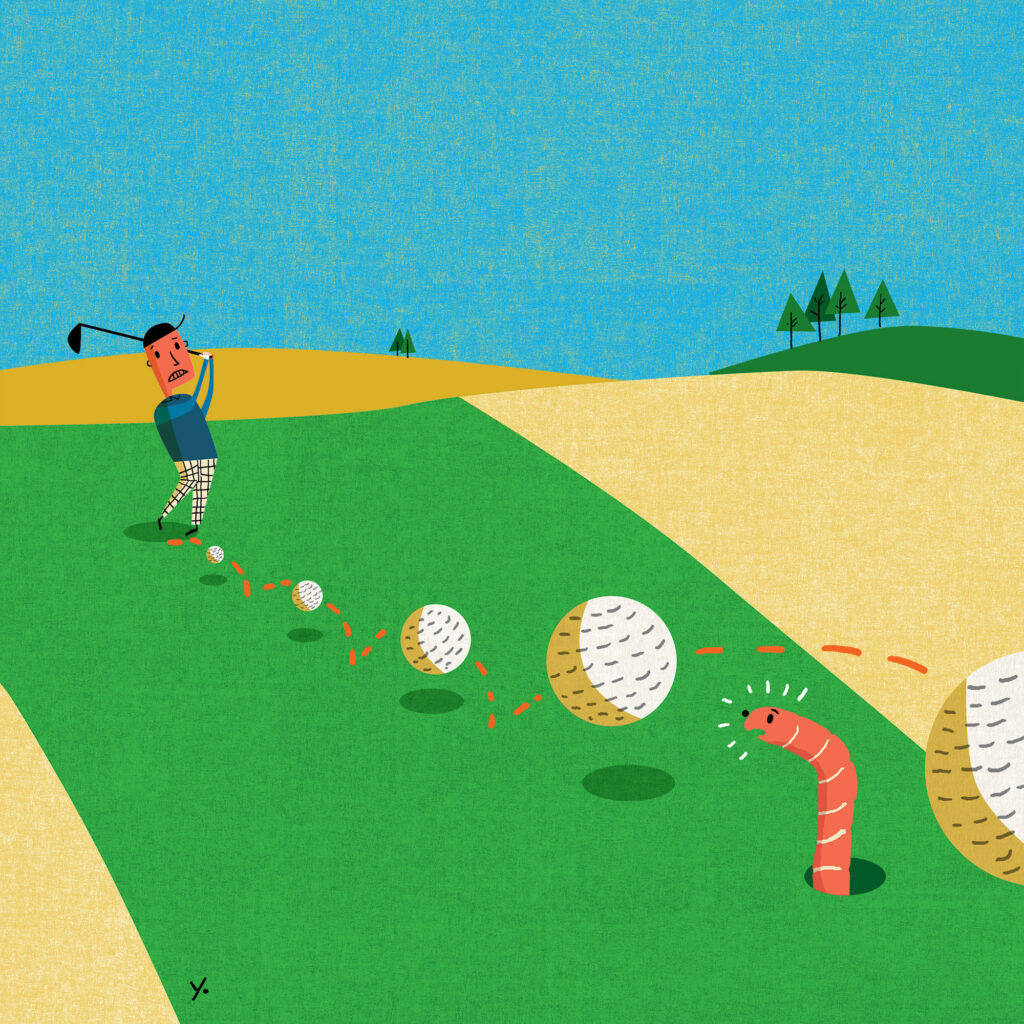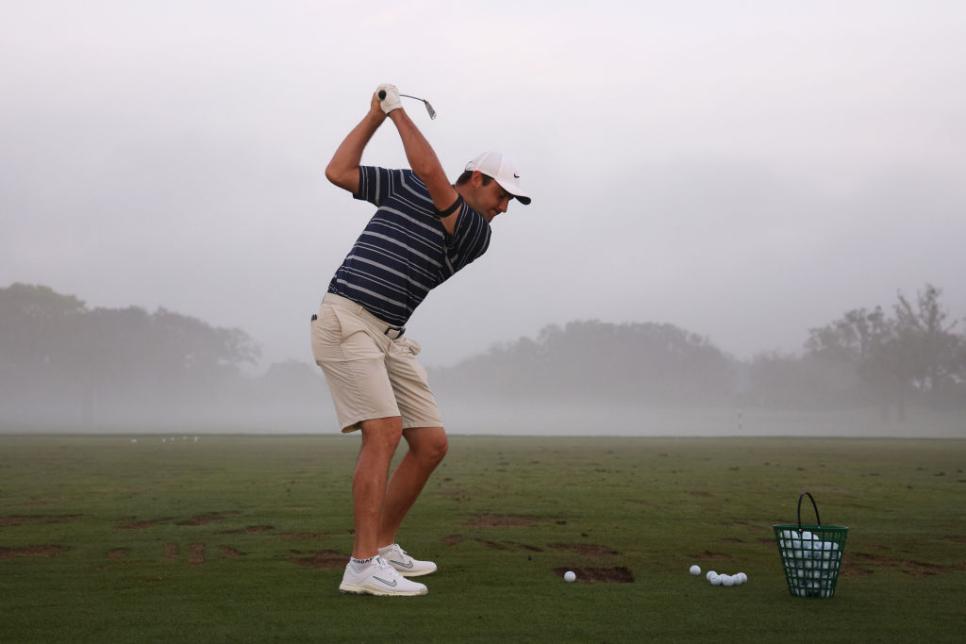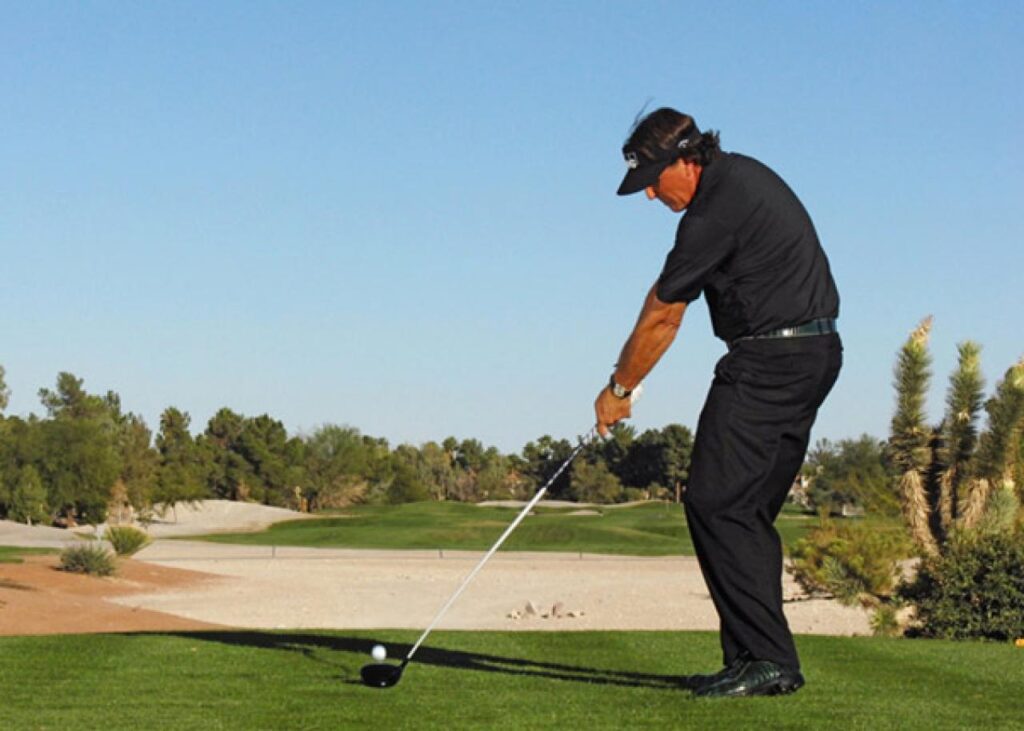It really sounds like an impossible task to swing in an arc to hit a ball straight at a target. Of course, that’s what you are trying to do with every golf swing. It’s the real reason why we have so many problems trying to hit our ball at a target.
The Golden Bear, Jack Nicklaus, used VISUALIZATION to hit his targets. He was making an imprint of his visualized shot on his brain. That memory controlled his swing direction and club face direction to create amazing shots. I suspect that it takes years of practice to achieve his skill level.
Understand the Science of Your Golf Swing
Your driver is your longest club, so the longer swing radius generates the most club head speed and distance but swing direction and face direction can generate the worst results. You need to understand what causes both of these “direction problems”.

Problems for Direction Control:
1/ Your left and right arm extend from the left and right sides of your shoulders. Your shoulders should initiate the start of your downswing and your leading shoulder ends up further from your ball at the point of impact than your trailing shoulder.
2/ At setup, your leading wrist is slightly bowed but at the point of impact you want you leading wrist to be flat (for drives) or slightly cupped (for irons).
Cause of Direction Control:
Hank Haney reminds us that we need to minimize angles to control the swing direction and club face direction. Unfortunately, your shoulders and wrists need to adjust during your swing to bring your club face to square at the point of impact.
Every pro (including Hank Haney) instruct us to SHALLOW OUR DOWNSWING (in order to swing on a path from inside-to-out) but they never tell us WHY. ANSWER: As your left and right shoulder rotate, a swing path from inside-to-out will minimize the arc of your swing to give you a straighter swing up your target line.
Solution for Direction Control:
Setup with a light grip and ensure that the V’s between your thumbs to your first fingers on both hands point to your trailing shoulders. During your backswing, allow your trailing hand to rotate your club open to flatten your leading wrist. That action also allows you to shallow your downswing to square the face of your club and swing in a straight line through impact.
You also need to keep your leading arm straight throughout your swing for a consistent distance to your ball. Practice with GOLFSTR+. Buy one today at www.GOLFSTR.com




